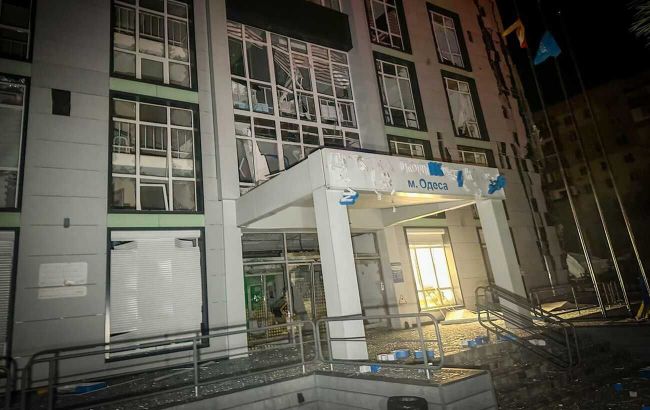Russia uses Shahed attacks on Odesa to maximize damage - Military expert
 Photo: aftermath of the attack on Odesa (photo: facebook.com/DSNSODE)
Photo: aftermath of the attack on Odesa (photo: facebook.com/DSNSODE)
Russian strikes on Odesa using Shahed drones are not simply preparations for missile attacks or a limit to their capabilities. Russia is carrying out these strikes to cause maximum damage, said military expert and reserve major of the Ukrainian Armed Forces, Oleksii Hetman, in a commentary to the RBC-Ukraine YouTube channel.
Hetman explained that Russia produces between 100 and 150 missiles per month.
"If there hasn’t been an attack for a month, you can expect a strike with around 100 missiles. If there’s been no attack for over a month, expect a double strike - one after the other with a 2-3 day interval, and around 100 missiles as well," said Hetman.
He emphasized that Shahed drone attacks on Odesa are difficult to intercept because they come from the Black Sea, which provides no natural barriers, allowing them to fly at very low altitudes.
He noted that the lower the altitude, the harder it is to detect and intercept the attack.
"Therefore, Shahed attacks from the sea are not missile drills. I don’t think it’s preparation for something larger. It’s simply an attempt to cause maximum damage in the most convenient way for them," the expert said.
Attacks on Odesa
Russian forces have carried out two consecutive nights of drone attacks on Odesa. On the night of February 19, they massively attacked the city and the district, with an energy facility hit. Additionally, a children's clinic, a kindergarten, residential buildings, and vehicles suffered damage.
On the evening of February 19, another attack targeted a DTEK energy facility. The strike also damaged the roof of a public catering establishment, a warehouse building, an administrative building, a car wash, and parts of a residential area, including the windows of a private home.

